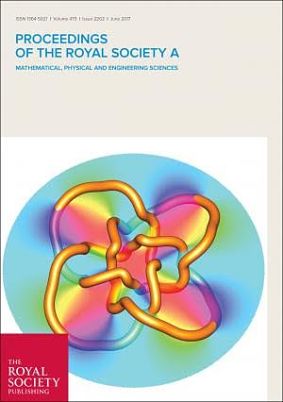Researchers at the University of Bristol have published two papers this week that provide new ways to describe complex knots mathematically, with the potential to provide templates for describing knotted configurations in many other physical systems.
The first paper, published in Proceedings of the Royal Society A, introduced lemniscate knots, a special knot family of which the figure-of-eight knot is the simplest member. Lemniscate knots are fibered, which means that they have the special property that the space around them can be filled with virtual surfaces which are all topologically equivalent – that is, they have the same number of holes and bridges. The construction of knotted fields can help to describe and visualize this procedure, known as fibration.
The three-twist knot 52, which is the focus of the second paper in Journal of Physics A, is the simplest unfibered knot. When mathematicians attempt to fill the space around this knot with surfaces, they encounter critical points where the topology of the surface changes. This means that typically the surface on one side of a critical point is topologically different from what’s on the other side. In describing this disruption, the researchers have clarified what was previously a poorly understood phenomenon. The example of the three-twist knot illustrates that constructing and describing knotted fields around unfibered knots is in principle possible for any knot or link and is not restricted to fibered knots.
The knotted field constructions in both papers could be applied to many physical systems, such as quantum mechanics and optics, which often require scientists to describe the tangled fields within which they are working.
Both papers have been selected to feature on the cover of their respective journals, illustrating their importance to the field of knot theory. The three-twist knot paper has also been added to IOP Select, articles chosen by editors for their significance and potential impact
Information for editors
This work is part of the Scientific Properties of Complex Knots (SPOCK) project, a collaboration between the University of Bristol and Durham University. The aim of the project is to create new computational tools and mathematical techniques for the analysis, synthesis and exploitation of knotted structures in a wide range of complex physical phenomena. The project is funded by a Research Programme Grant from the Leverhulme Trust and the authors gratefully acknowledge their support.
Papers
Knotted fields and explicit fibrations for lemniscate knots. B. Bode, M. R. Dennis, D. Foster, R. P. King. Proceedings of the Royal Society A 475 (2017) 20160829. DOI: 10.1098/rspa.2016.0829. Published 7 June 2017.
Constructing a polynomial whose nodal set is the three-twist knot 52. M. R. Dennis and B. Bode. Journal of Physics A: Mathematical and Theoretical 50 (2017) 265204. DOI: 10.1088/1751-8121/aa6cbe. Published 6 June 2017.

